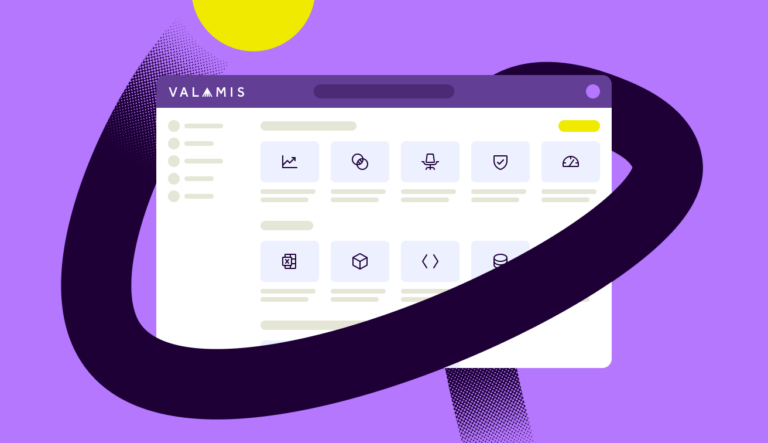Adult learning theories
Adult learning theory is an important part of an organization’s success. Explore how to implement it to engage your learners and the benefits of doing so.

A good training program is an incredibly important part of an organization’s success.
It is the first thing that new employees come into contact with, it helps engage existing employees through upskilling, and it creates the foundation upon which all employees will interact with the organization’s knowledge base.
To fully optimize your organization’s training program, it is important to know, understand, and apply adult learning theory.
After reading this article, you will understand adult learning theory and be able to implement it’s principles in your organization’s training program. In doing so, you will be able to create programs that will engage learners, save time, and lead to better employee performance.
What are adult learning theories?
There are quite a few different adult learning theories, but all of them start with the same idea: Adults learn differently than children.
The way that adults and children learn differ in many important ways:
- Adults tend to be more self-motivated, as they understand the value of education and often have a solid goal in mind when they begin studying. Children need higher levels of engagement, as they are less naturally motivated in learning situations.
- Adults can tap into their existing knowledge base to understand new concepts, while children are often approaching a new subject from an entirely blank slate.
- Adults are much more able to self-direct to solve problems and learn new concepts, while children have a higher need for direction.
Adult learning theory highlights the fact that training programs must be developed with adults in mind to be effective. There is no one unified adult learning theory, however, there are different theories that will fit the needs of different organizations.
Adult learning theories
- Andragogy
- Self-directed learning
- Transformational learning
- Experiential learning
- Project-based learning
- Action learning
- Behaviorism
- Cognitivism
- Constructivism
- Social learning theory
1. Andragogy
Andragogy means the art and science of teaching adults, as opposed to pedagogy, which is the art and science of teaching children.
Developed in 1968 by Malcolm Knowles.
Andragogy theory posits that the adult learner:
- Is much better suited to direct their own learning than a child learner.
- Uses their own knowledge base and life experience to aid in their learning.
- Will be engaged, present, and ready to learn when the material is of immediate relevance, such as in a new job, social, or life role.
- Wants to be able to apply new information immediately to solve problems in their life.
- Needs to have a voice in both the planning and evaluation of their learning experience.
This means that andragogy is better suited for those who are strongly self-motivated or are within a goal-oriented and structured program, or for teaching how to solve specific problems.
Learners without self-motivation, or those who value a classroom experience over alternative learning, will not find as much value in this type of learning. Some critics have pointed out that this type of learning will not work across all cultures.
To use andragogy in training, the instructor should create a space that welcomes collaboration, with materials that are relevant to the learner’s needs. The instructor should demonstrate why the lesson is important to learn, using real-world examples of how this concept will be valuable to the learner. The learning should come through doing, rather than memorization or repetition.
An organization can effectively use andragogy in its training program by setting out common problems that the learner will encounter in their new role, then assisting the learner in developing solutions to those problems.
2. Self-directed learning
This theory, also known as SDL, was developed in 1997 by D.R. Garrison and builds on Malcolm Knowles’ theory of andragogy.
It folds in concepts of how adults self-manage, creating a theory with the premise that the adult learner:
- Takes the initiative to understand what they need to learn. The learner sets learning goals, finds the resources they need, creates, and follows a learning plan, then they evaluate their own results.
- Will seek out those who can help them, including teachers, mentors, or peers.
- Will respond positively to being in control of their own learning journey, putting in the time to make informed decisions, and incorporate learning on a daily basis.
Self-directed learning is well suited for self-motivated learners, as well as those who respond well to technology-based learning.
This type of learning works well with subjects that have concrete, black or white answers, rather than grey areas. For example, a learner might see a need to become proficient in a new language. Self-directed learning would be helpful in this, as they could seek out apps, books, or conversation groups to help them learn. They can review their own progress, and there will be clear answers as to whether or not they are using the language correctly.
Learners need to be able to evaluate their own results to see how they are progressing with their learning and assess what areas they need to focus on.
While SDL can be a useful training tool, it is made much more useful by having a trainer to facilitate learning. This person can be on hand to assist the learner as they perform their self-assessment, work alongside learners to identify the proper starting point for the learning journey, as well as helping the learner access the resources that will best help them.
This facilitator acts more as a guide and source of encouragement than a teacher, being available to help when necessary but allowing the learner the space that they need to self-direct their learning.
Critics of self-directed learning point out that self-directed learning can be difficult for some learners, especially those who have less education, low literacy skills, or have low self-confidence.
The results of SDL might be different than the planned or desired results, and learners may take more time to fully engage the subject than those who have stricter programs.
This type of learning can be a valuable part of a blended training program, especially in regards to upskilling.
3. Transformational learning
This theory, developed by Jack Mezirow in 1978, is concerned with the ability to use learning to transform the way that the learner views the world.
This theory posits that through a teacher introducing new concepts, challenging assumptions, and disrupting perspectives, a learner:
- Can shift their world view in significant ways, resulting in a completely new frame of reference.
- Will face a ‘disorienting dilemma’, information that challenges their perspective in such a foundational manner that they rethink their existing standpoint and use critical thinking to adjust their beliefs.
- Will have an easier time remembering the concepts taught, as the transformation includes behavior, thoughts, and beliefs.
This type of learning is a good fit for employees who require personal or professional growth, learning about complex analytical processes or for teaching learners how to apply evaluation and analysis to various situations.
This type of learning will not always be relevant within an organization, and has been criticized at valuing rationality over emotion, relationships and culture, as well as being blind to context.
To use transformational learning within an organization’s training program, instructors should create the right environment, one that supports the learner through authentic interactions, sincere and empathetic instruction, and supportive space where the learner is encouraged to question their beliefs without judgment.
Instructors should introduce material that explores different points of view and direct learners to engage with it deeply.
Learners who enjoy questioning the world around them will respond well to this sort of instruction, those who are eager debaters, rational thinkers or critical analyzers will find this type of learning to be engaging.

Build a learning culture: a practical workbook for your organization
Upgrade your organization’s learning culture with clear, actionable strategies to address the challenges.
Download workbook4. Experiential learning
This type of learning theory was developed in the 70’s by David Kolb.
It centers hands-on learning and uses experiences to demonstrate concepts. In experiential learning, the learner will:
- Actively participate in the learning process.
- Reflect upon their experience after the participation stage, developing and firming the knowledge that they have gained.
- Consider the successes and failures of the learning process, in order to develop improvements for the next learning activity. In doing so, they will use abstract conceptualization to use the new skills that they have learned during the process.
This type of learning works well with learners who are eager to learn and in tasks that require systematic thinking or mechanical skills.
Some organizations use experiential learning to teach professionalism, customer service, or even supply chain management.
Criticisms of experiential learning have focused on the overemphasis on individual knowledge at the expense of social context.
An organization can develop training programs that use experiential learning through setting up role-play exercises, bringing in thought leaders to share their experiences, or using virtual reality to simulate common situations that employees might face on the job.
A good facilitator will encourage reflection and conceptualization after the experiential aspect of the learning is complete, and will prompt learners to contemplate how they can activate their new knowledge in their everyday roles.
5. Project-based learning
This theory, developed by John Dewey in 1897, centers around the idea of learning by doing, usually as a group.
The theory posits that learners:
- Acquire knowledge in a more holistic and deep fashion when they actively explore a real-world issue.
- Should work on this problem for an extended timeframe, investigating, developing, and testing the potential solutions, while using instructors for feedback on a regular basis.
- Will understand knowledge more completely as a result of having to actively apply it.
Project-based learning is a great fit for organizations that want to develop the long-term project management skills of their management teams, improvement of processes, and research and development projects, especially in software and technology.
A criticism of Project-based learning is that some members of the group may be tempted to take advantage of the collaborative nature of the group and slack off. If the instructor’s direction is lacking, this may not be caught and some learners will take on more than their fair share while another learner takes the credit for someone else’s hard work.
An organization can integrate this theory into their training programs by creating environments where groups can meet to solve real problems within the company. This could be as simple as learning new software or as complex as developing a new product concept. By providing instructors to act as guides and facilitators, groups can be primed to develop their knowledge with minimal interference and maximum ownership of the final product.
This theory shares many similarities with Phenomenon-based learning, with the notable difference that phenomenon-based learning tasks learners to approach problem-solving in a multi-disciplinary manner while using a global mindset.
6. Action learning
This theory was developed by Reg Revans in 1982 and is concerned with solving problems while simplifying solutions, often in a group dynamic.
In Action learning theory, learners:
- Follow a process of asking questions about the problem to better understand it, reflecting on what possible solutions might be, identifying the best one, and then finally taking action.
- After taking action, learners will then reflect again, questioning their process, the results, and how they could improve them.
- Build cohesiveness, gain the collaborative ability, and better understand group dynamics throughout the process.
An organization can use action learning to facilitate team building, pinpoint areas of learning need where further training is necessary, and bulk up the organizational knowledge of employees.
It is important with this type of learning that the group is given enough time to reflect on the process after the action has been taken. Without that period, the desired learning will not take place. A skilled facilitator is necessary for these activities, primarily for keeping the participants on track, within time limits, and to make space for the reflection period.
Action learning can be implemented in training plans by gathering groups of learners to solve example problems or maybe even complex problems that the organization is facing. Using a facilitator, teams can be presented with the issue and then given the simple guidelines above. As they begin to work through the process, the facilitator will guide them, supplying knowledge where needed, but generally curating the environment needed for the learners.
7. Behaviorism
Developed by B. F. Skinner in the 40’s, behaviorism theorizes that people learn through being conditioned, using stimulus, reward, and punishment.
This theory proposes that the learner:
- Gains information in response to stimuli.
- Benefits from instruction that repeats and reinforces information while the learner passively receives it.
- Requires the demonstration of either positive or negative consequences.
Behaviorism is very common in training programs where a standard outcome is desired, such as health and safety demonstrations or company policy seminars. In a situation where instructors do not need participation or action from learners, this type of learning can be of benefit.
With an engaging trainer and incentives for learners who do well, behaviorism can be folded into a company training program easily. However, this should not be the only type of training that a learner receives. Critics find behaviorism to be quick to disengage learners and can lead to them not remembering important information effectively.
8. Cognitivism
This theory was developed as a rejection of behaviorism and stated that learners were far more active in the learning process than behaviorists claim.
This theory states that the learner:
- Acquires knowledge by combining both old and new information together in a holistic fashion.
- Receives information, processes it, and organizes it according to existing knowledge to better be able to recall it later.
- Is an active participant in their own learning process.
Cognitivism can be very effective in scenarios when a learner is able to reflect on the knowledge gained and then apply it to their own work. For example, after a week-long training seminar, a learner can be encouraged to take a morning to reflect on what they have learned and consider the ways that this new information can be applied in their role.
To use cognitivism in training, instructors should ensure that the information is presented in such a way that it is made meaningful to the learner. The more that the information relates to the learner’s existing knowledge, the easier the learner will remember it. Analogies and metaphors can be especially helpful for this, as well as concept mapping. Successful instructors will structure new information in such a way that it clearly shows how it relates to existing knowledge.
If using this theory in a workplace training program, be cautious of overburdening learners with information. Cognitive overload can happen when a learner has been given too much information without enough time to process it.
9. Constructivism
This theory states that knowledge is created not by transmission from instructor to the learner, but rather by a learner creating meaning for themselves.
Constructivists believe that the learner:
- Actively creates their own meaning and knowledge from experiences.
- Is the engine behind their own knowledge development, linking old information to new and then contextualizing it.
- Uses their own personal and cultural experiences to contextualize new information.
In constructivism, instructors act as facilitators for learners, asking questions, and providing informational resources that learners can use to explore the concepts being taught. Using assimilation and accommodation, learners will use their existing knowledge, experiences, and beliefs to gain an understanding of new concepts.
In the workplace, this theory can be seen in action when employees write self-reviews, grouping learners into teams to learn new concepts, or engage in mentorship programs. The instructor should be just as active as the learner, providing guidance while learners use the information provided to create their own meanings.
10. Social learning theory
Developed by Albert Bandura in the 70’s, this theory combined behaviorism and cognitivism.
Social learning theory presumes that learners:
- Will gain information by combining their own experiences with observations of the rewards and punishments that others receive for their actions.
- Observe the response to behavior within the workplace and gain understanding as to how they should act from that.
- Imitate the behavior of those around them who they respect.
This theory is useful in demonstrating proper workplace behavior. Managers act as role models, demonstrating what is acceptable, rewarding employees who follow their lead and providing correction in a uniform manner to those who do not follow the modeled behavior.
Instructors should be clear about what they are demonstrating and can use anecdotes, role-play, or training videos to reinforce the information. Drawing from the idea that learners will be more engaged if the instructor is respected, successful programs should use instructors who are well regarded within the organization.
Social learning theory will not serve your organization well if there is not uniformity. Learners will be quick to see if there are favorites, or if negative behavior carries no consequences. Instructors should be careful to be even-handed and fair.
All of these theories can be used alone or in blended training programs. Learners will differ in how they respond to training, and it is always helpful to have information presented in a few different ways so that you can ensure that your workforce is well-informed, competent, and safe.

Build a learning culture: a practical workbook for your organization
Upgrade your organization’s learning culture with clear, actionable strategies to address the challenges.
Download workbook



